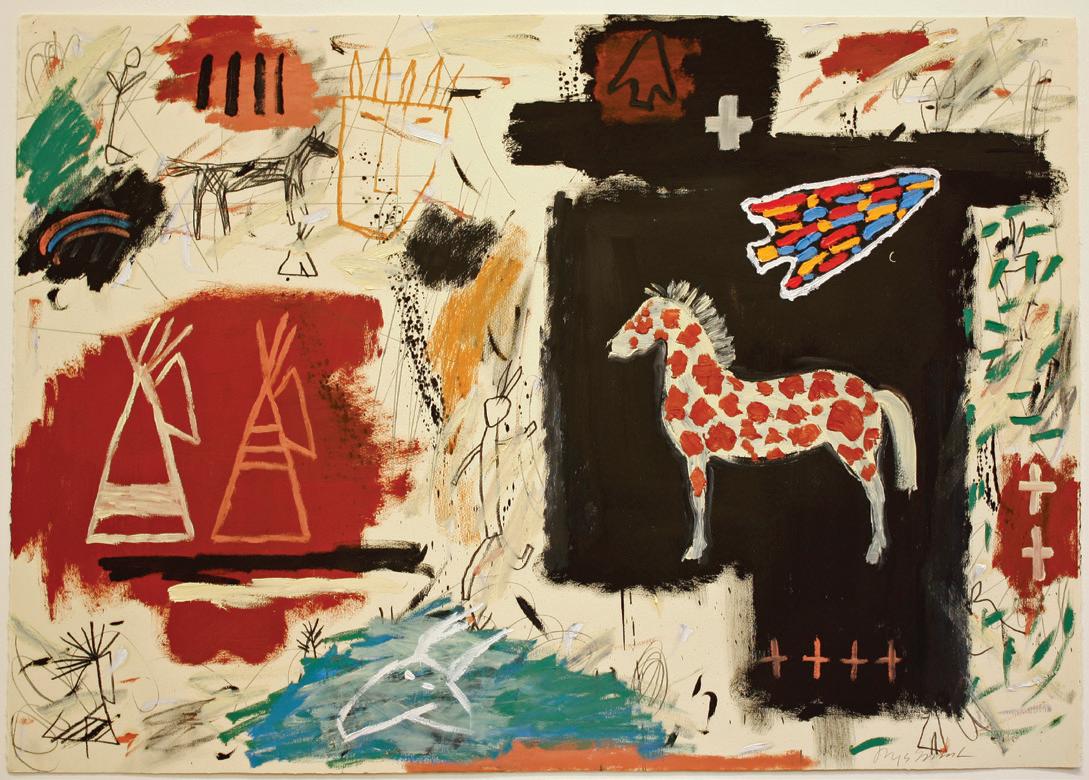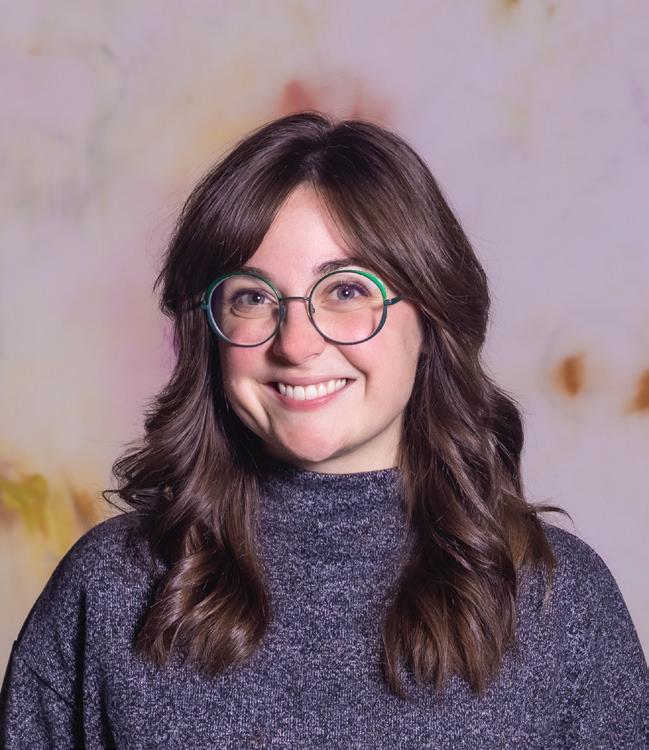
10 minute read
NEWS & ANNOUNCEMENTS
The YAM welcomes our newest team members!
Laura Krapacher, Registrar, is the newest member of the Curatorial team. Laura moved to Montana from Baltimore, MD and most recently worked at The George Washington University Museum, the Textile Museum, and the Keith Haring Foundation.
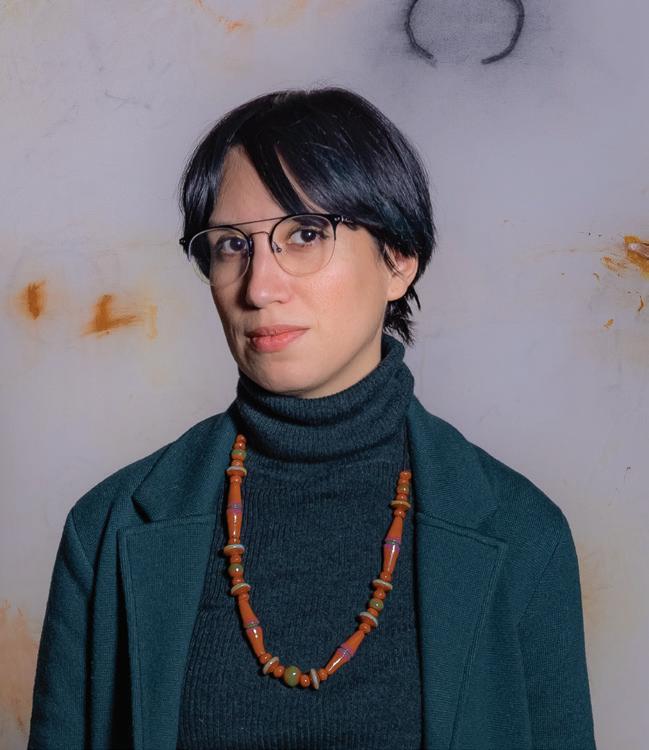
Hillary Skinner, Leadership Team Associate, works with the YAM’s staff leadership and Board of Trustees to assist with all the work of the museum. Outside of the office, Hillary enjoys a quilting practice and time outdoors with husband Michael, and pup Charlie.
Precious McKenzie, Advancement Director, leads the museum’s Development team, including special events and membership. Precious previously worked at Rocky Mountain College and has served on non-profit boards, including for This House of Books and NOVA Center for the Performing Arts.
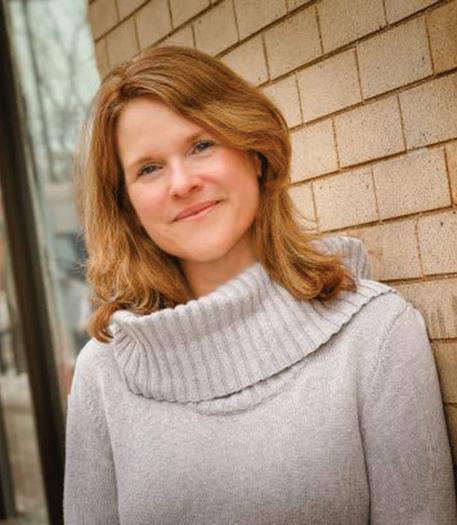
It is wonderful to start the new year with each of their expertise and talent.
Thank you, John!
In January, John Greenberger retires from his role as YAM Finance and Administration Director. We thank him for all he has contributed to the museum! John was first introduced as a member of the Board of Trustees in 2015. He was elected as Treasurer and Finance Committee Chair at the annual meeting in 2016. He served in that role until July 2017 when he left the Board and became YAM’s Finance and Administration Director. Between his time as a Trustee and his work on the staff, John has been a key part of museum leadership for over seven years. We wish him all the best in retirement and hope to see him in the galleries often.
Legacy Gifts to the YAM
Long-term estate planning is an important part of financial planning. Charitable bequests and planned gifts empower individuals and families to support the organizations they value most. A clear and detailed estate plan can also minimize tax and administrative burdens on loved ones. Planned gifts to the YAM allow the museum to continue the important work of arts programming and education in our community.
To learn more about making a bequest or planned gift to the Yellowstone Art Museum, please email development@ artmuseum.org. Our team can share valuable information and help you create a plan that secures your legacy.
As always, thank you for your support!
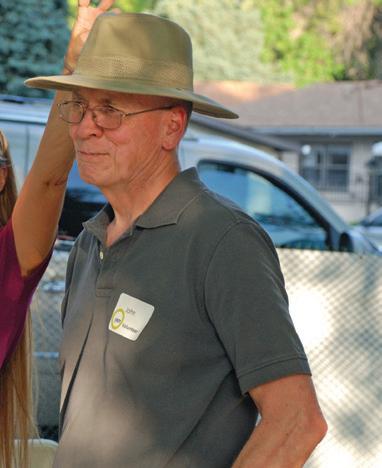
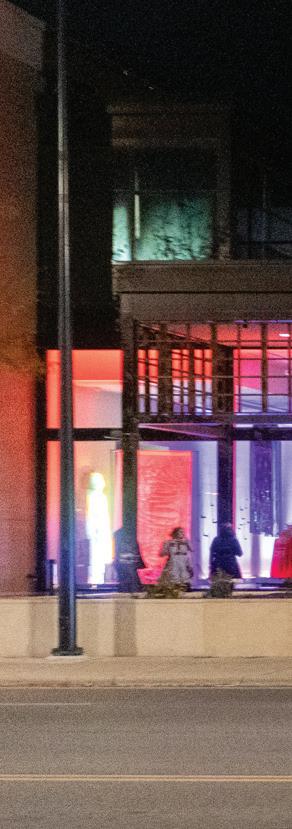
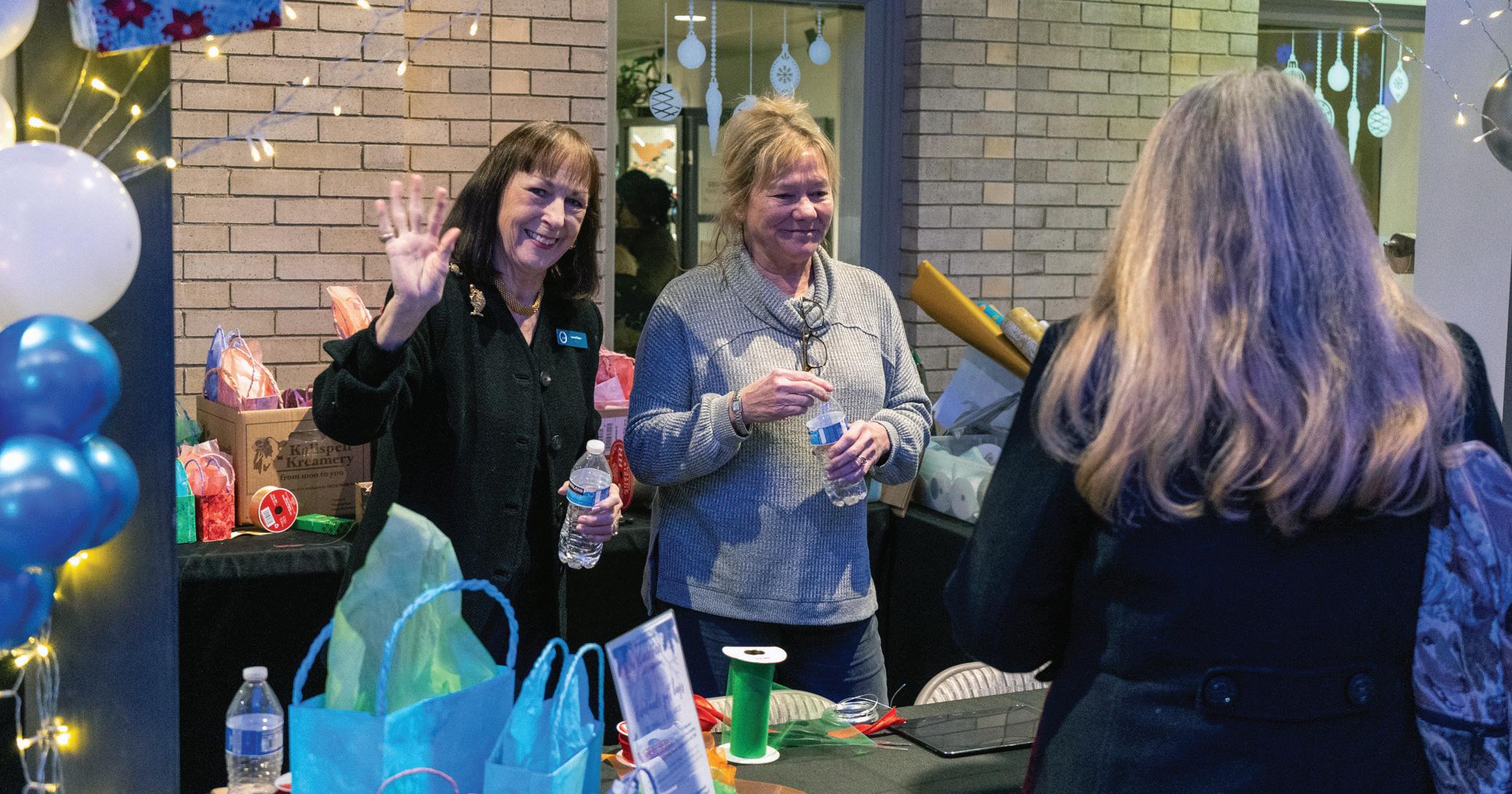
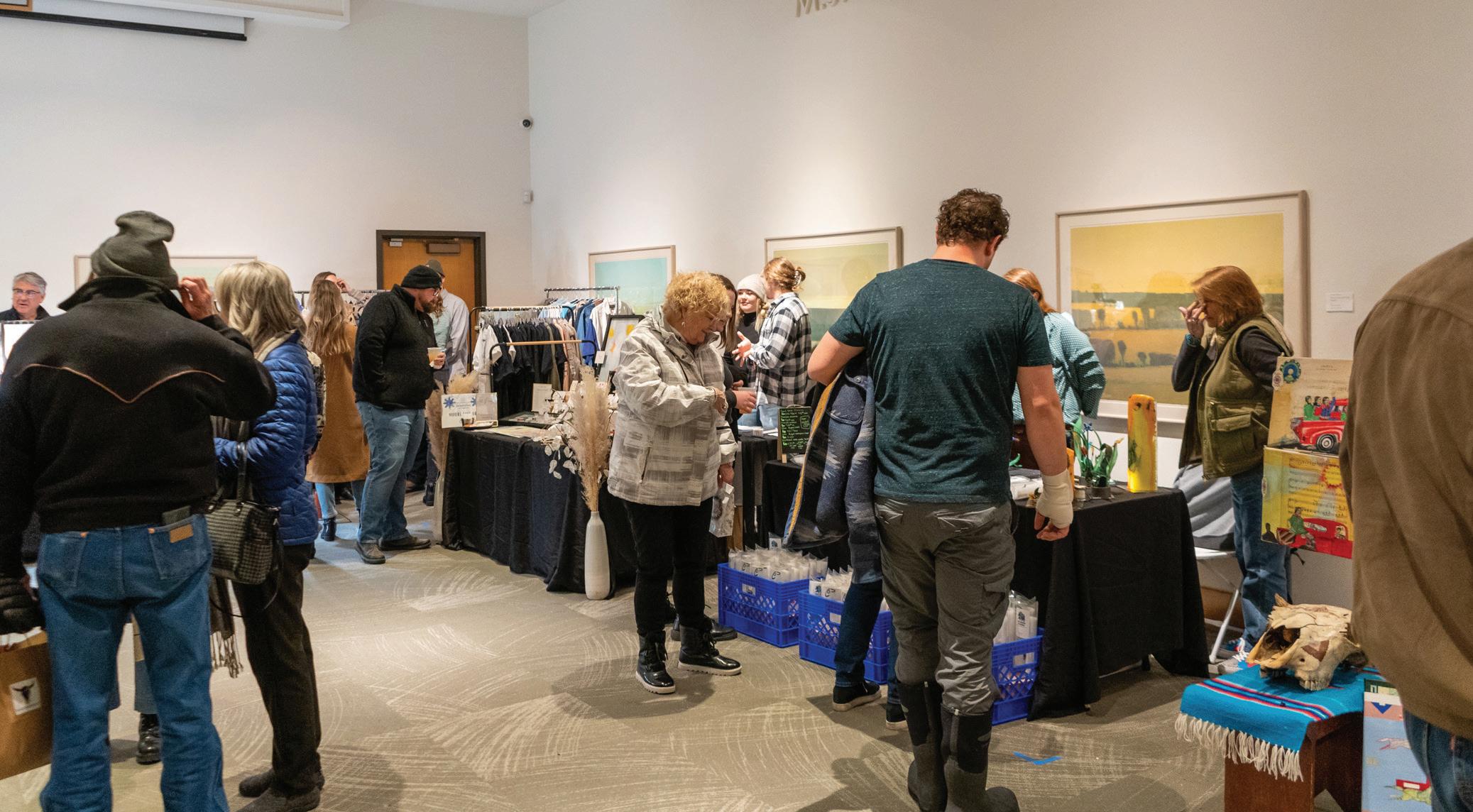
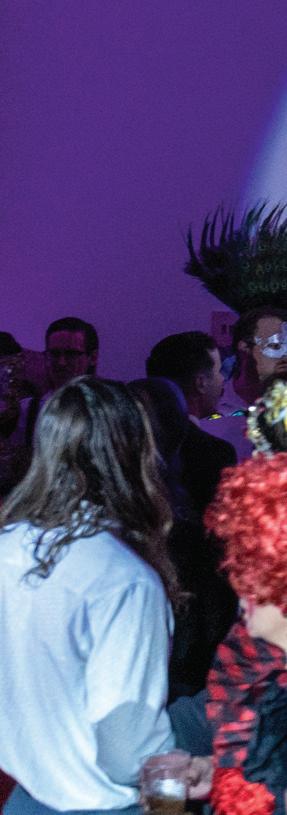
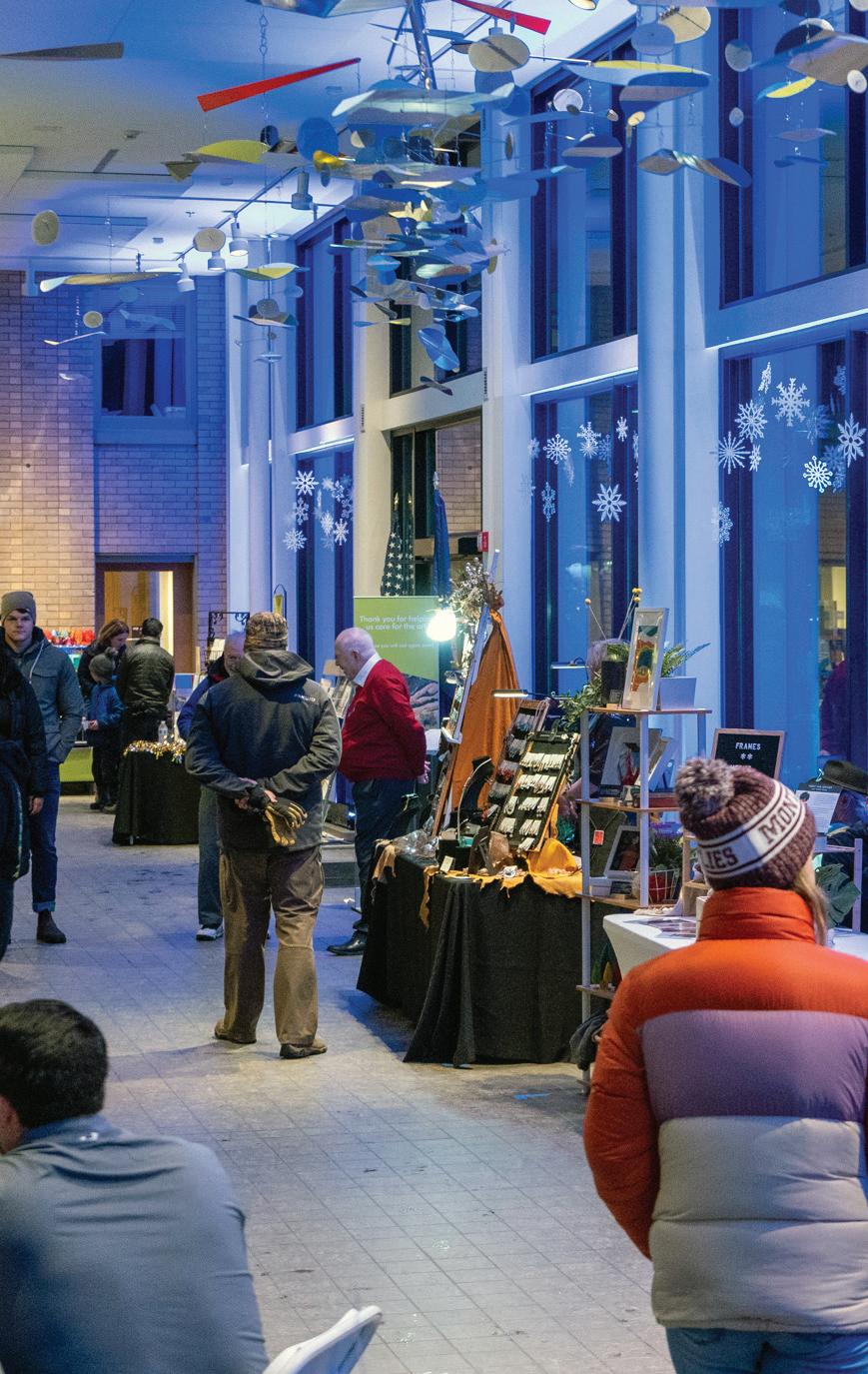
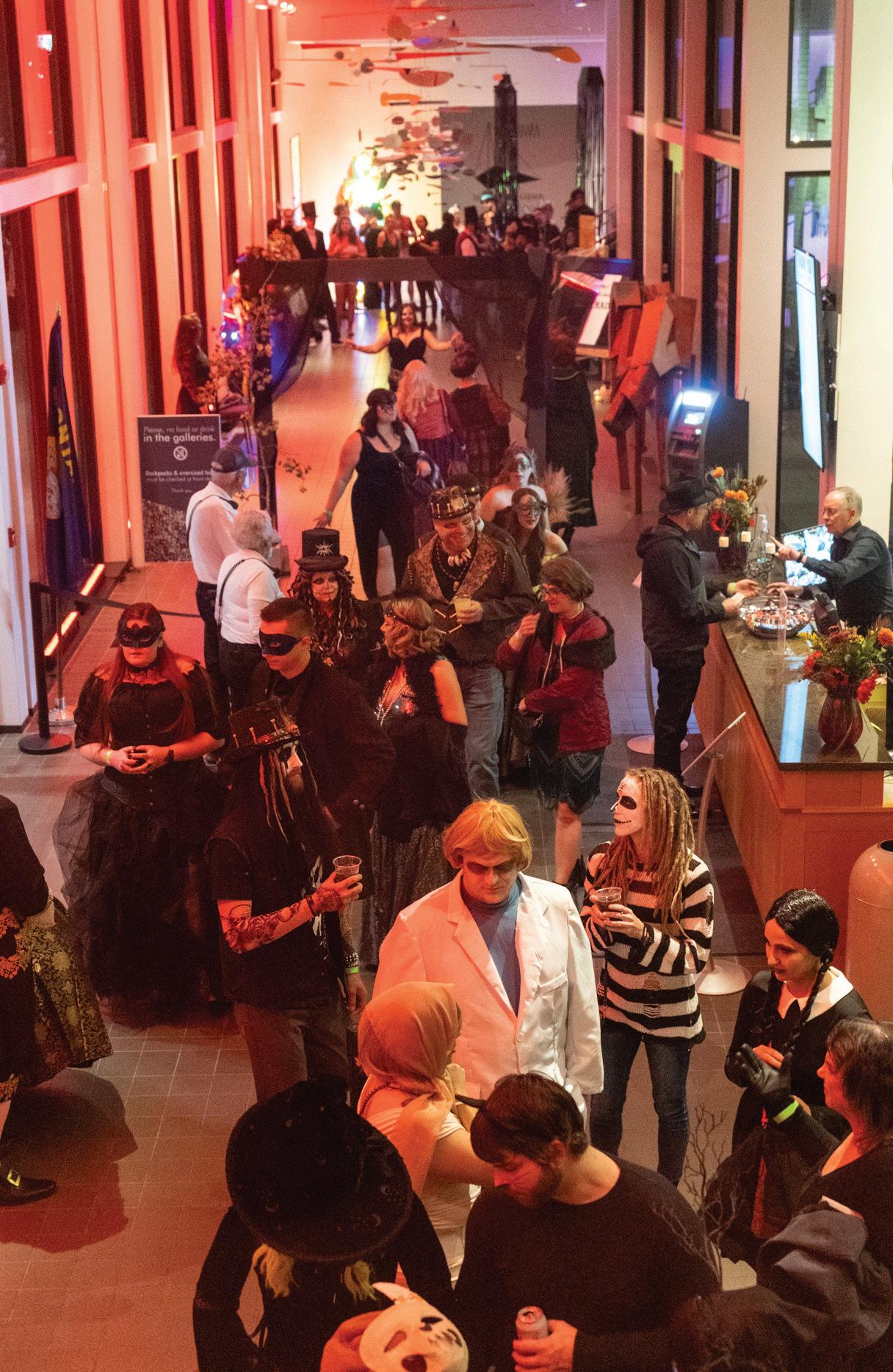
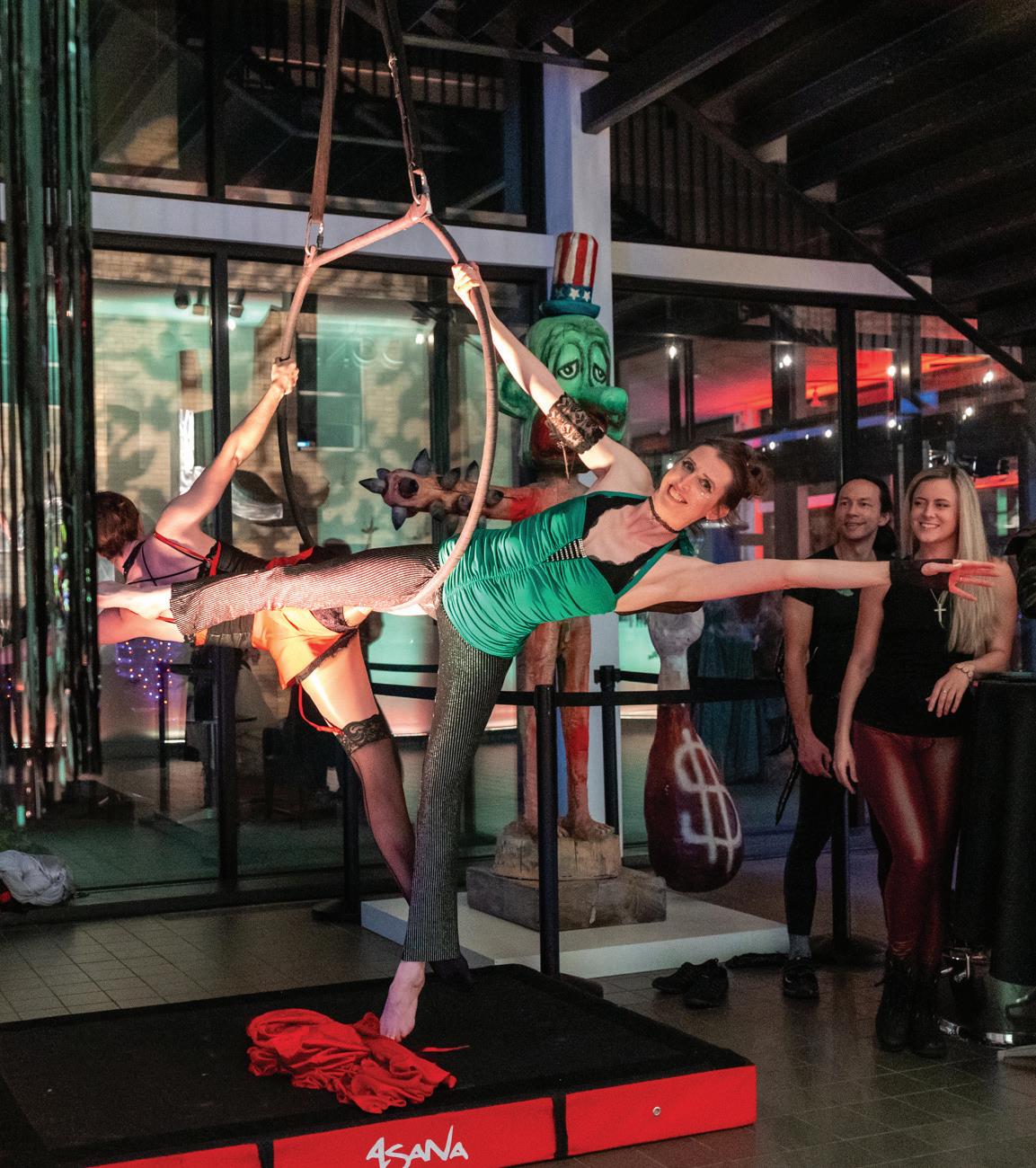
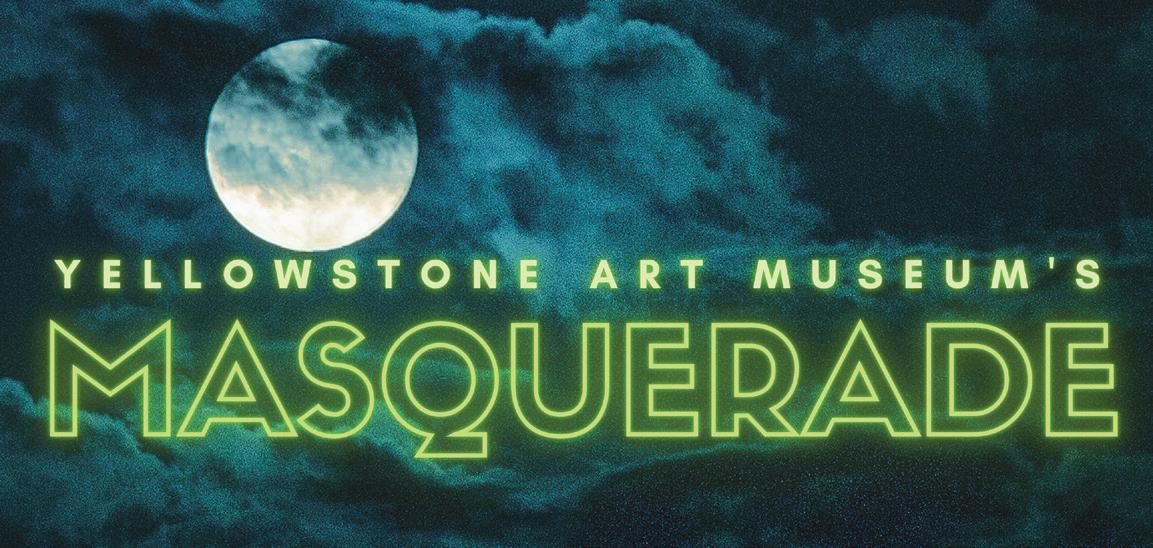
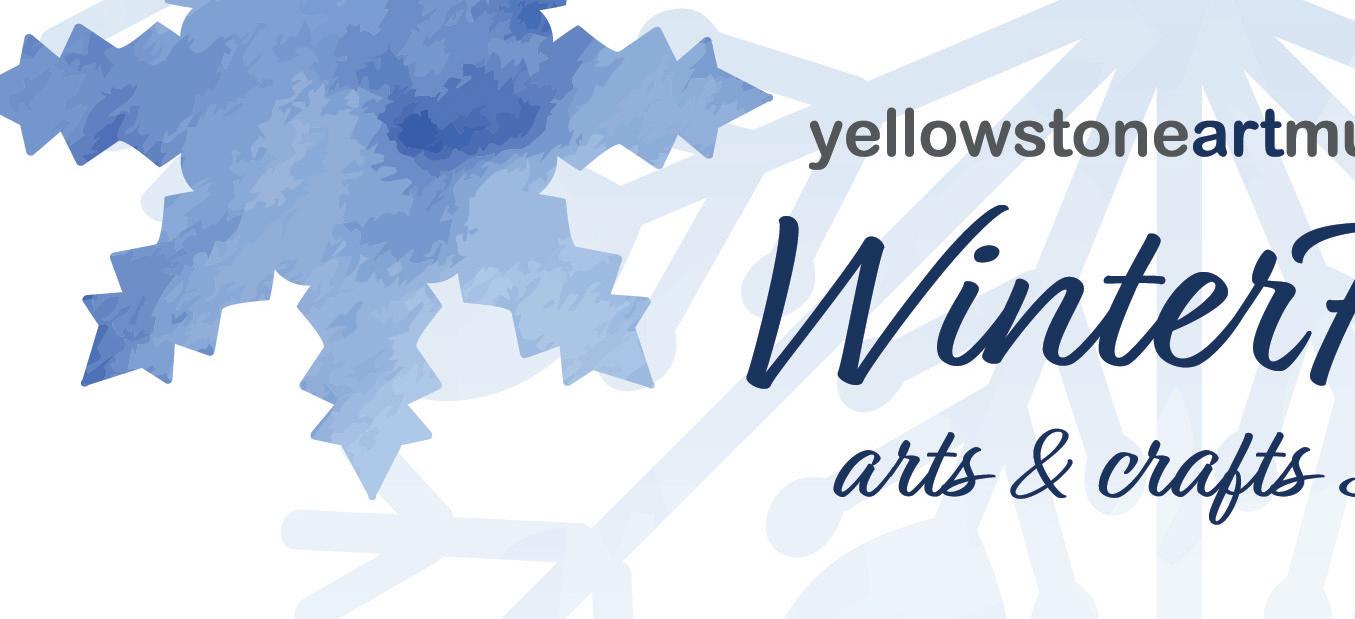
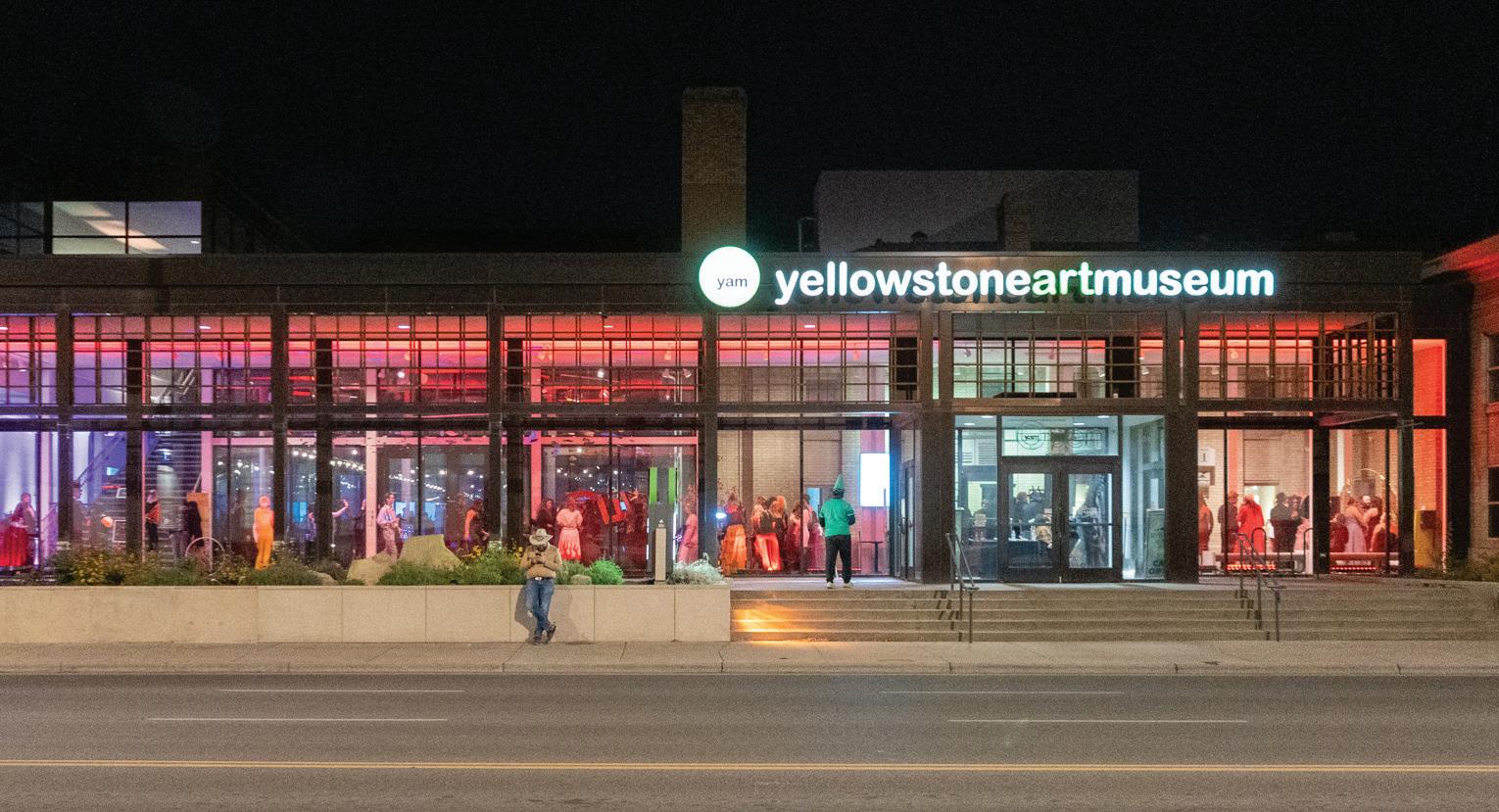
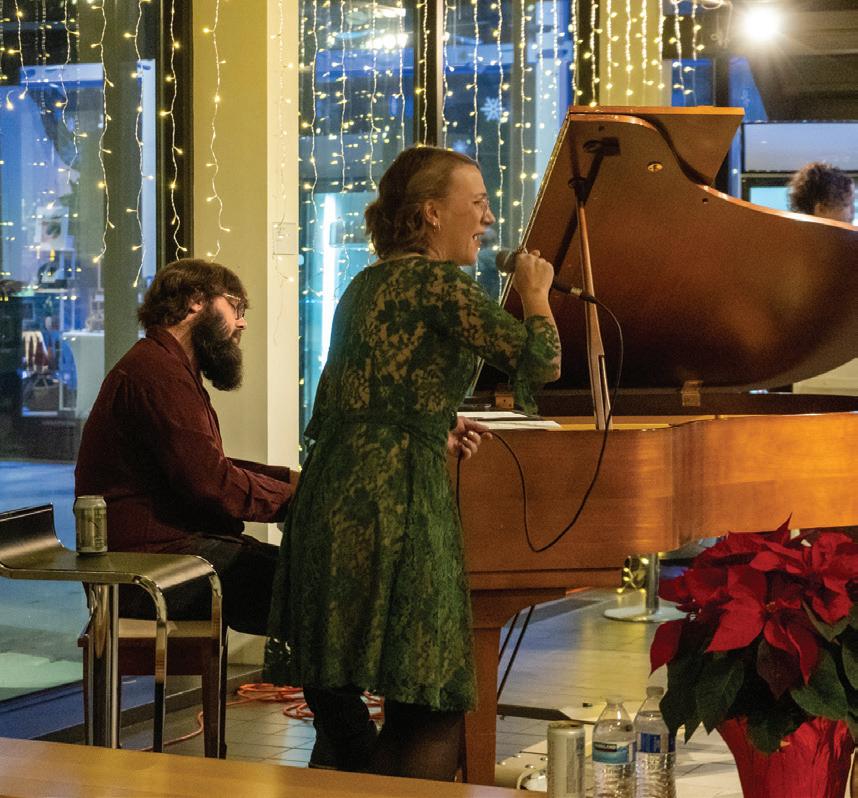
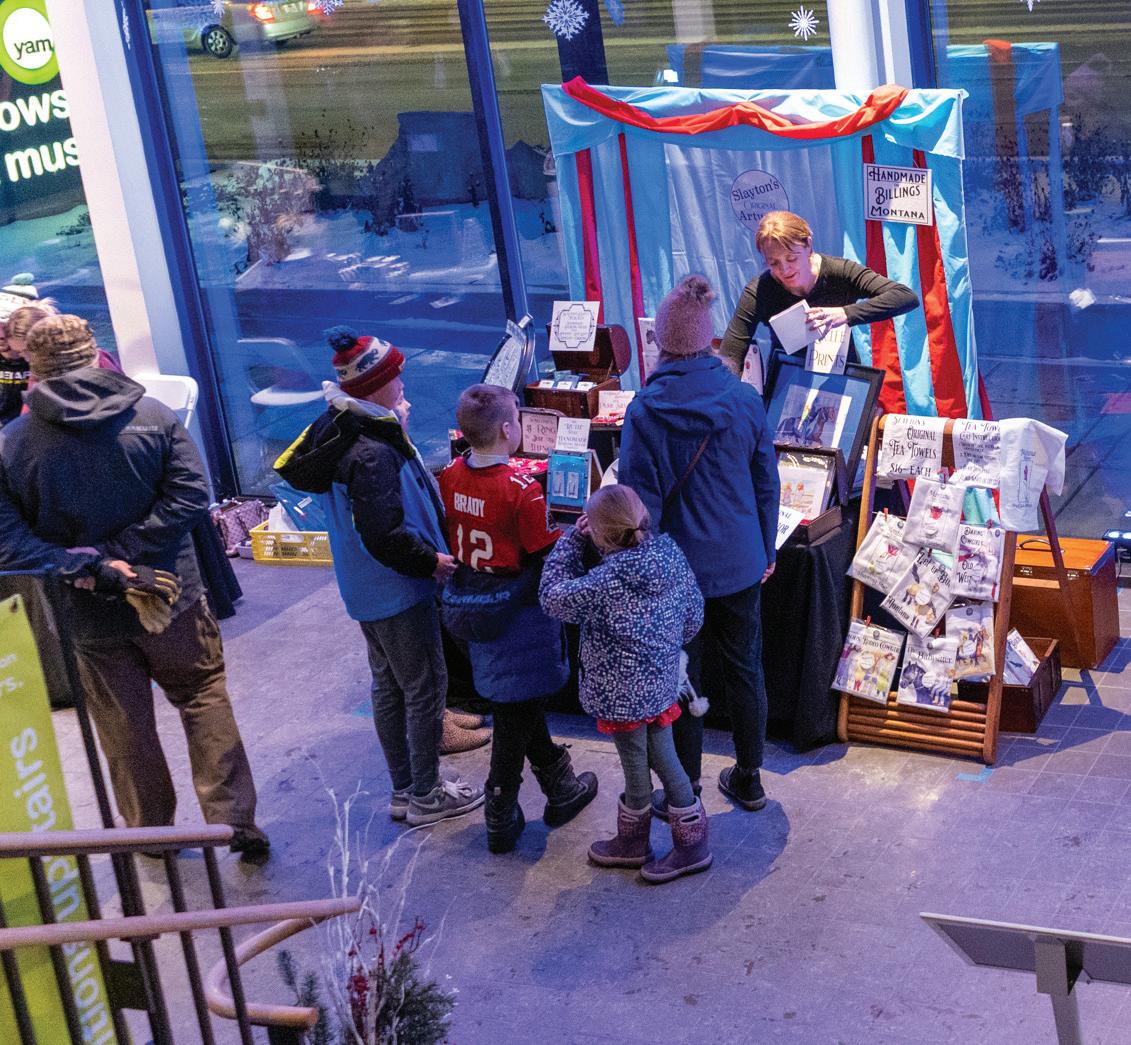
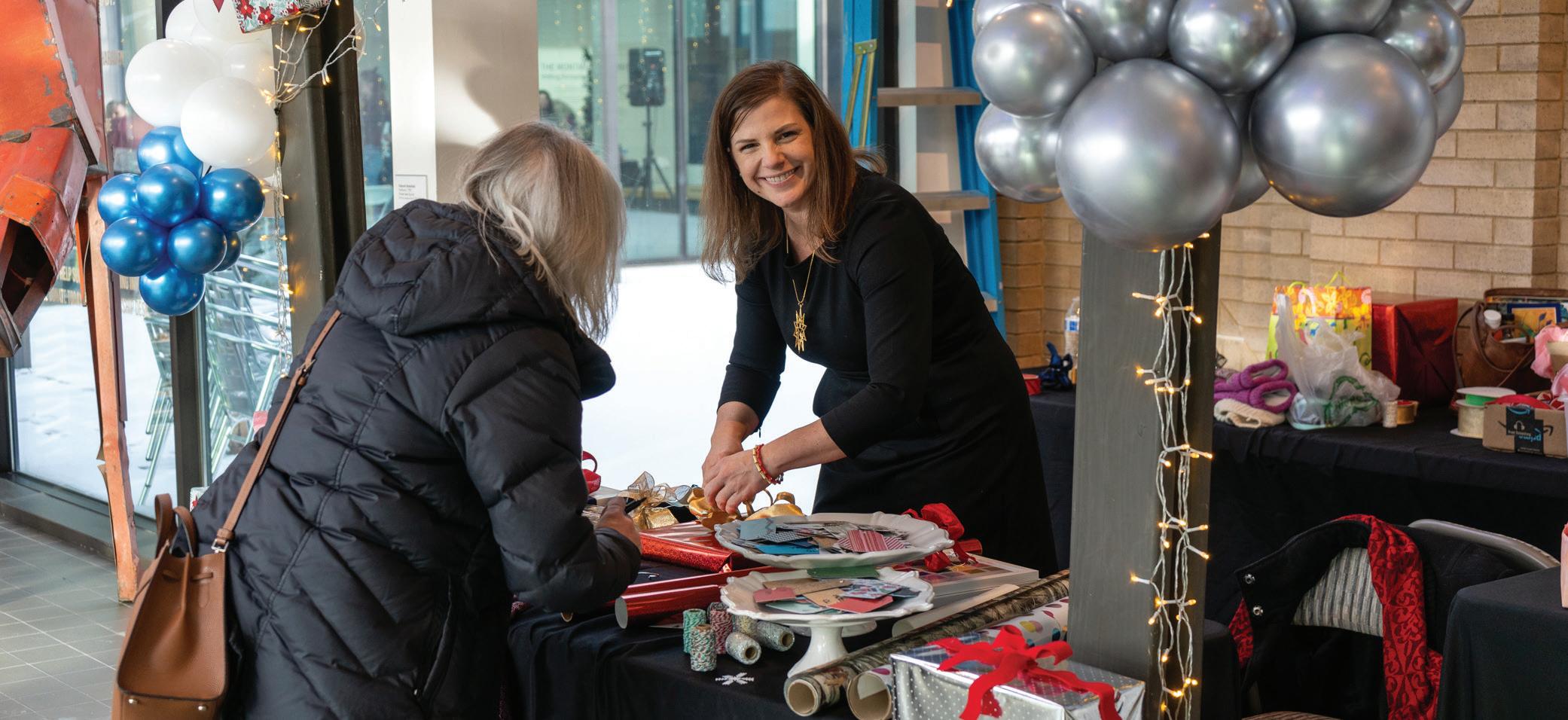
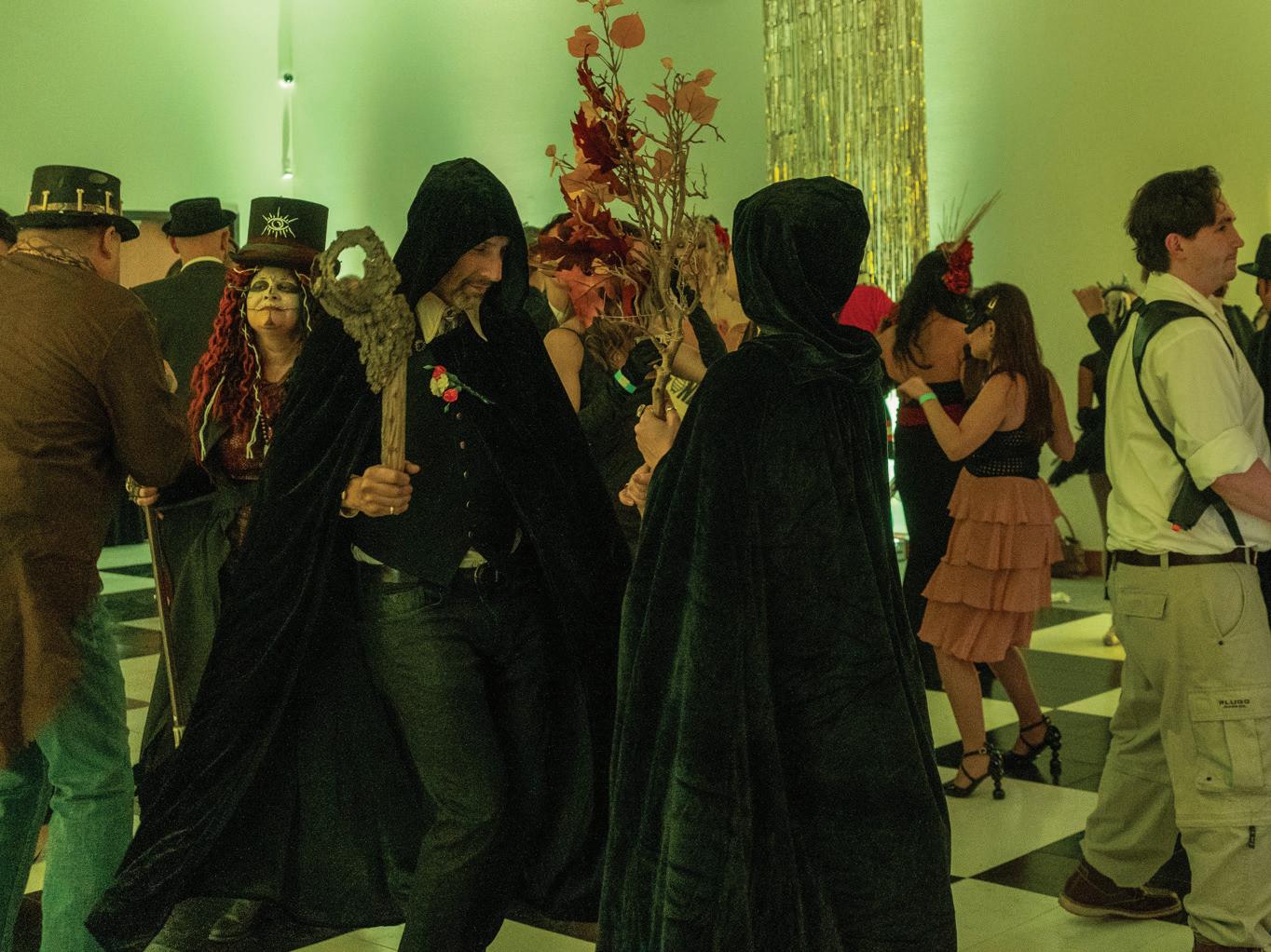
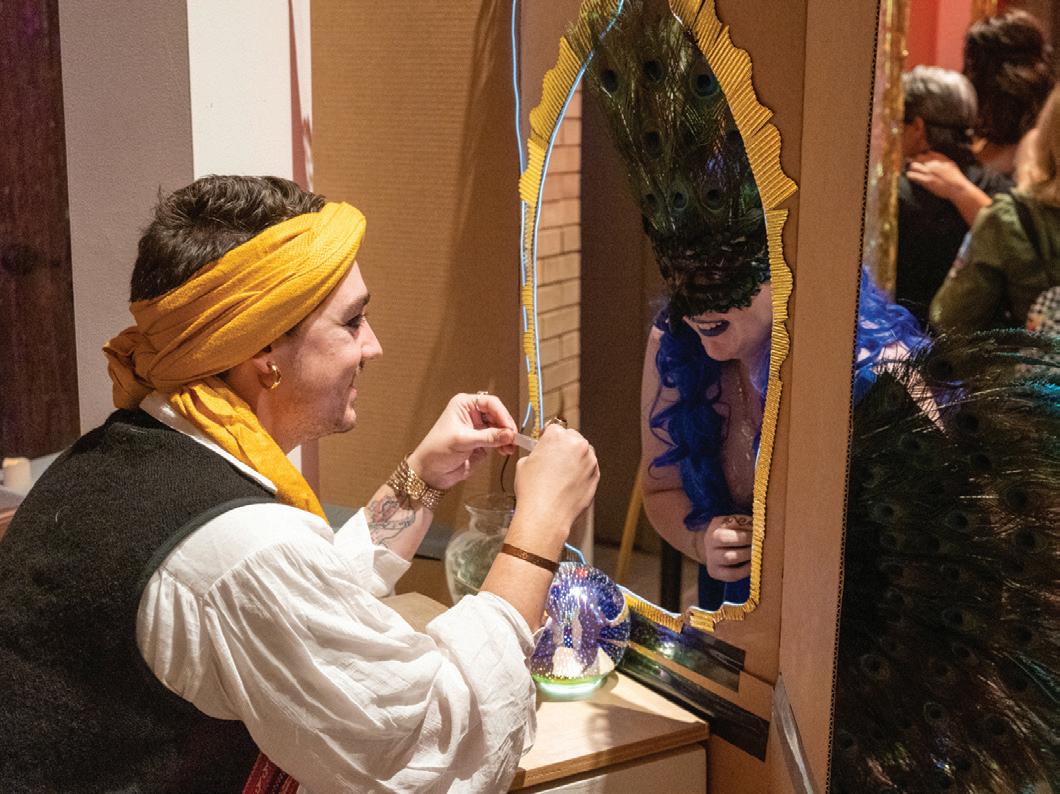
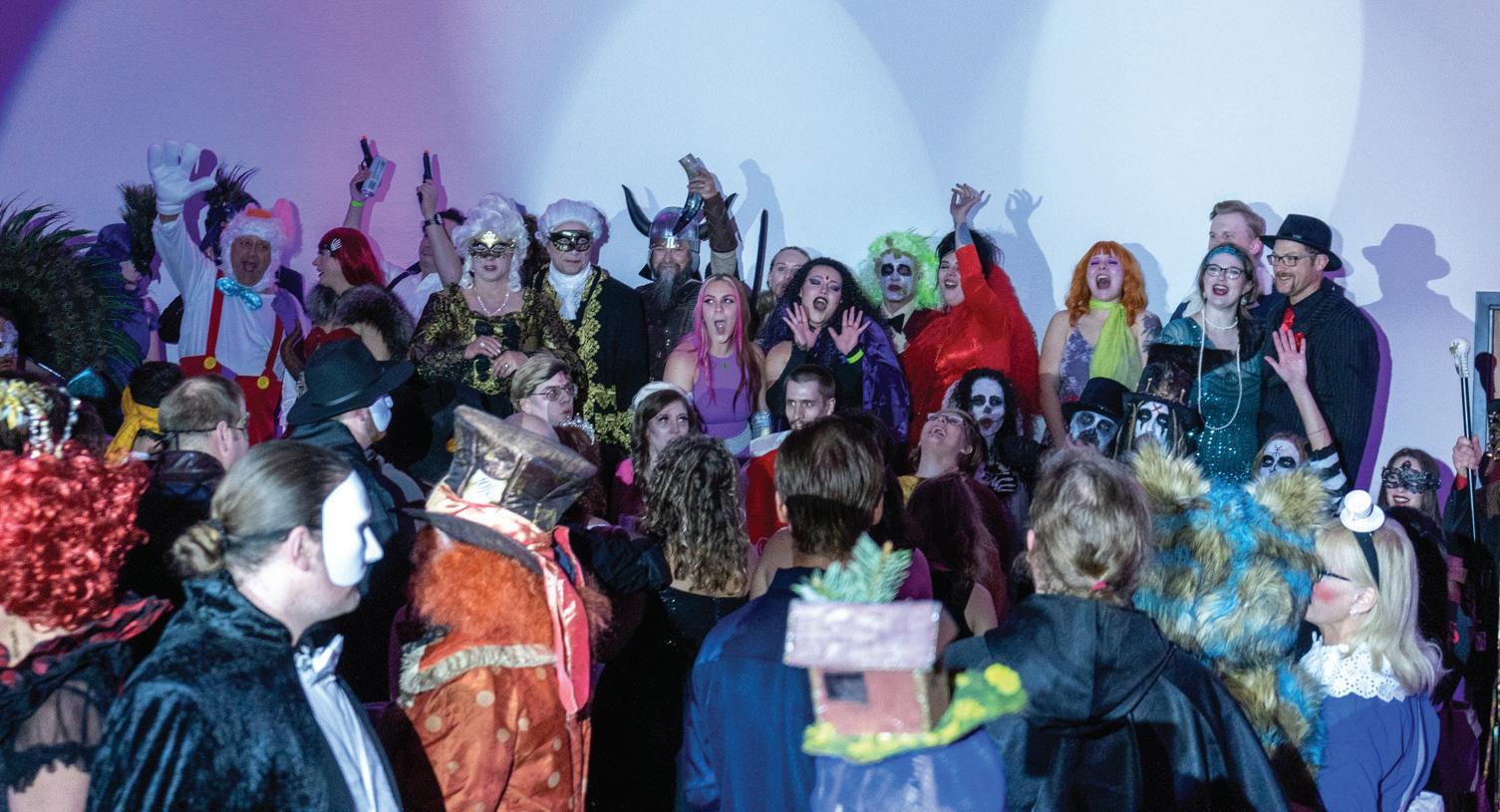
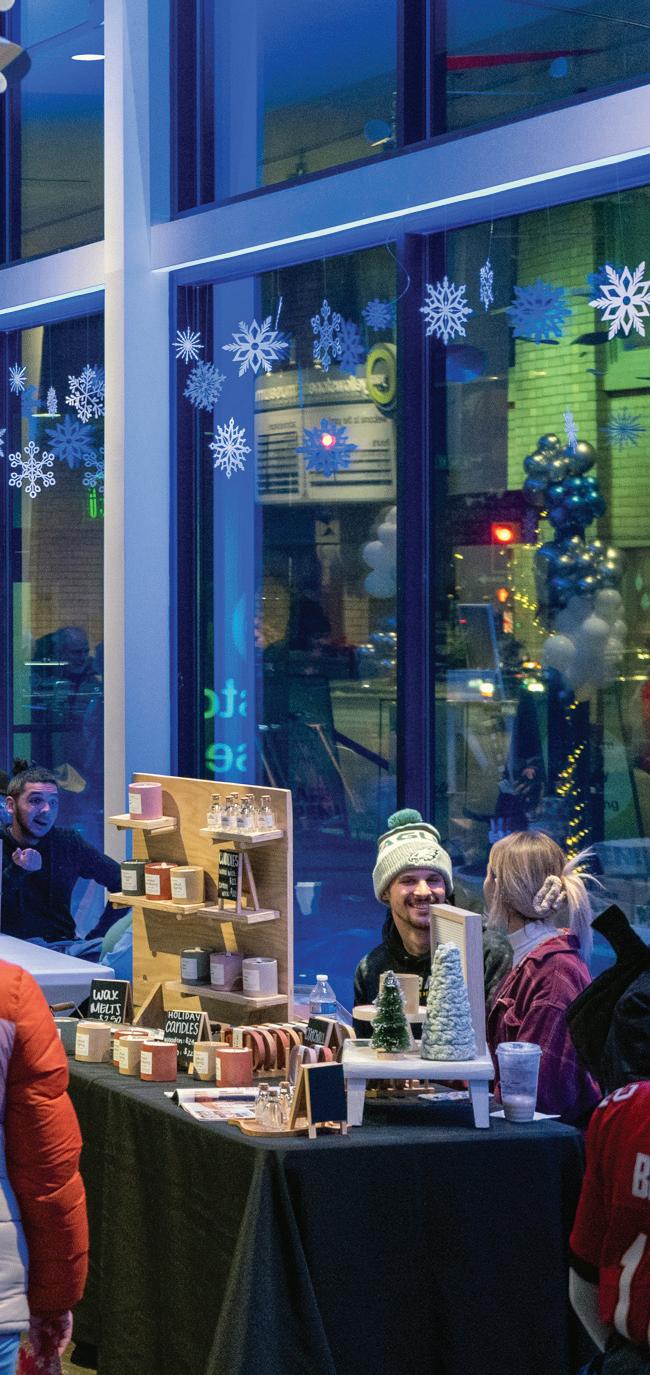
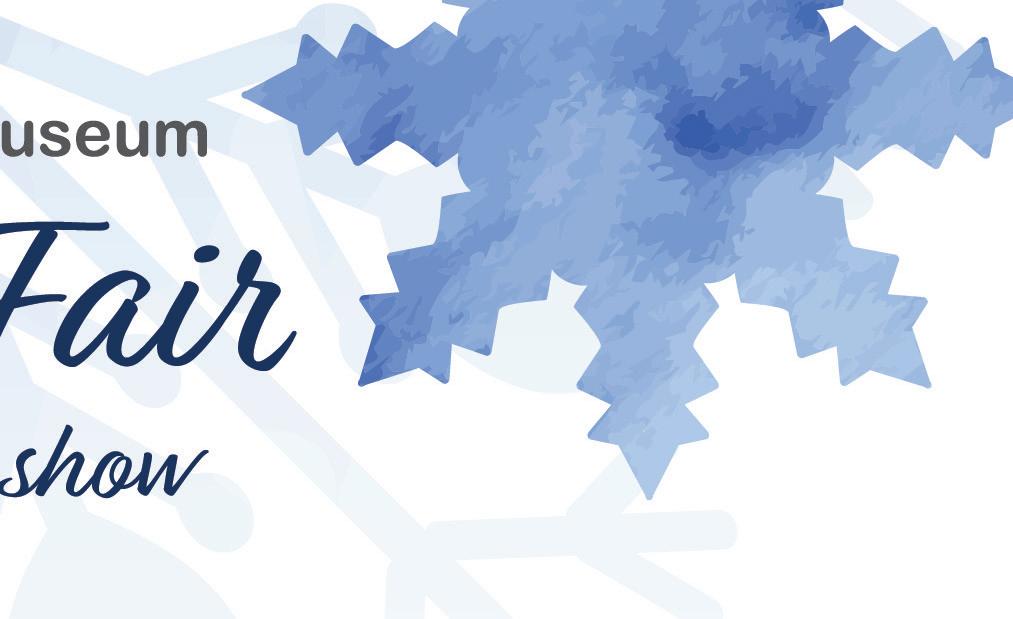
Master Printer: Robert Blackburn (1920–2003)
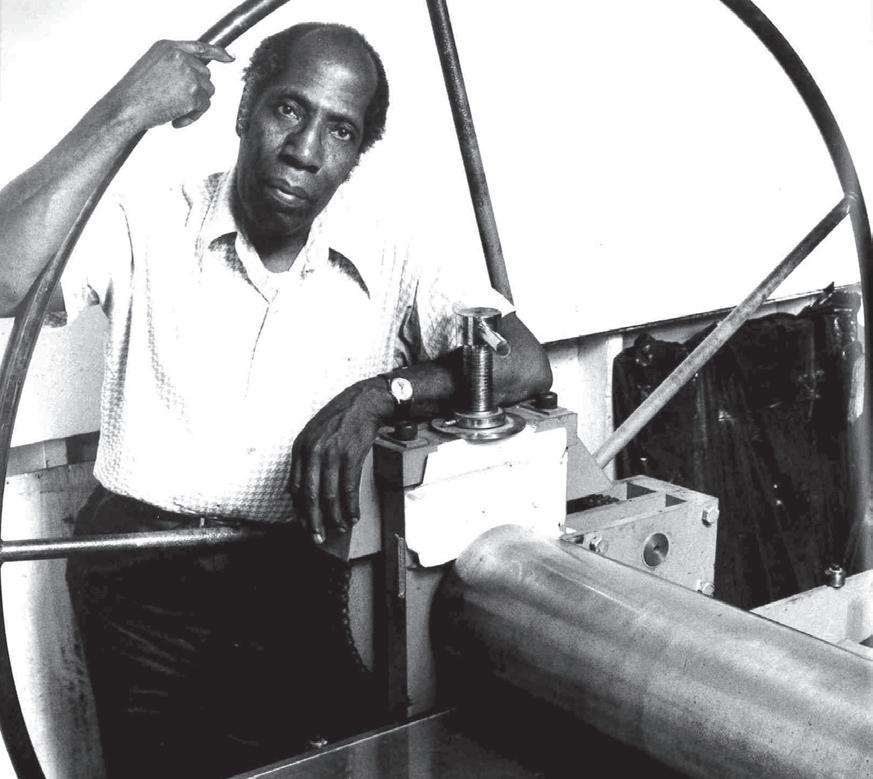
November 10, 2022 – June 11, 2023
// Mildred Sandall Scott Galleries
Thirteen compositions of bold color and form by influential artist, master printmaker, and modernist Robert Blackburn are now on view in the firstfloor gallery, coinciding with the long-running exhibition, The Montana Modernists: Shifting Perspectives. Blackburn, an internationally known artist, exhibited throughout the United States and worldwide. His work is held in the collections of the Baltimore Museum of Art, Brooklyn Museum, Howard University, and many others.
Blackburn grew up during the Harlem Renaissance, becoming involved with several art programs funded by the Works Progress Administration (WPA). Most notably, the Harlem Art Center (1937 – 1942) was a meeting place for artists, writers, and dancers. There, he befriended fellow artists Romare Bearden, Jacob Lawrence, and was first introduced to lithography. This was a rich period of cross-disciplinary artistic and cultural activity, where Blackburn was mentored by a collaborative and innovative community.
In 1941, Blackburn received scholarships to the Art Students’ League, where he studied painting and apprenticed in Will Barnet’s printmaking studio. In 1948, with Barnet’s help, he started the Printmaking Workshop located on 114 West 17th Street in New York City. The workshop welcomed artists worldwide, and became a lively communal space nurtured by Blackburn’s philosophy that “artists of all ages, colors and backgrounds could flourish together while developing themselves and the creative potential of the printmaking medium.” In 1949 he was designated a Master Printer by the National Academy of Design.
When the Abstract Expressionist Movement captured the imagination of the commercial gallery world in the 1950’s and ‘60s, printmakers had few real exhibition opportunities. The lithographic medium was so strongly associated with the social realist style of American art of the 1930’s and ‘40s that few galleries conceived of its potential as an expressive medium for this new movement. However, by following the formal boundaries of Cubism, Blackburn found incredible flexibility in printmaking, leading him to discoveries about form, color, surface, ground, and figure. His still-lives and engraved collage compositions, created out of geometric forms, became translucent and opaque surfaces of color and shape.
Between a fellowship in Paris (1953 – 54) and working as a master printer at Universal Limited Editions (ULAE), Blackburn became a significant force. He introduced American artists, often for the first time, to the potential of the lithographic medium and printed editions for Larry Rivers, Jasper Johns, Robert Rauschenberg, Robert Motherwell, and Helen Frankenthaler.
In 1962 Blackburn returned to the Printmaking Workshop full-time. His innovative, masterful expertise helped to define the overall aesthetic of the American “graphics boom.” Among his many awards are Skowhegan Governor’s Arts Award and the John D. and Catherine T. MacArthur Award in 1992.
This exhibition is generously on loan from the Nelson/Dunks Collection.
The Montana Modernists: Shifting Perspectives
November 10, 2022 – June 11, 2023 // Mildred Sandall Scott Galleries
Sponsors: Charles M. Bair Family Trust, Linda Shelhamer and Stephen Haraden, Gordon McConnell and Betty Loos, and Dr. Ralph and Sheryl Costanzo
The Montana Modernists exhibition opening on November 10th follows the investigation of twentieth-century postwar Montana art in guest curator Dr. Michele Corriel’s new book Montana Modernists: Shifting Perspectives on Western Art. Examining the emergence of an avant-garde movement in the state, Dr. Corriel profiles the pioneers of this movement, Jessie Wilber, Frances Senska, Bill Stockton, Isabelle Johnson, Robert DeWeese, and Gennie DeWeese. Together, these artists implemented an aesthetic philosophy and a modern understanding of form, color, and abstraction that expanded the way Western art in Montana is defined.
Drawing primarily from the extensive collection of the Yellowstone Art Museum, the exhibition explores the first-generation modernists in Montana through the themes of Place, Artistic Lineage, and Community—all crucial elements in the lives and works of these artists. As the early movement grew and took hold across the state, it not only affected artmaking but allowed Montanans access to new ways of viewing themselves, society, and nature, and a way of seeing that had lasting effects on the struggle for a broader, more authentic Montana narrative.
This wave of postwar artists found the need to express themselves differently from the Western illustrative work permeating the state. Their experiences, their point of view, and the changing world they found themselves in required something more. As Robert DeWeese noted, “The art students in 1949 were a completely different lot. They’d been in the war worldwide, and they were hungry for all of it.” It is not a leap to suggest that so many veterans who had seen the world, the war, the dropping of the atomic bomb, the devastation of Europe, and the reckoning with fascism needed a new way to communicate.
Isabelle Johnson and Bill Stockton were native-born Montana ranchers, and Wilber, Senska, and the DeWeeses came from elsewhere to teach at Montana State in Bozeman. They were all missionaries of modernism who developed an authentic, personal style of expression in response to the land and society of contemporary Montana. Showing the works of all six of these artists together in one place demonstrates what these artists did and how in their interactions with one another, in their teaching, and, most of all, in the works they left behind, they created an art movement that still resonates today.
Michele Corriel researched these artists for years before writing her book, and this show reflects her deep consideration for each of them. “This project, culminating in a show at the Yellowstone Art Museum, validates the last five years of my academic life. I am thrilled to work with the YAM and to fulfill my personal promise to these amazing artists. I hope to keep their work in the eyes of the public for years to come.”
Corriel is a well-published art writer and has covered the region for the last 15 years. Her Ph.D. in American Art helped to guide her work through the rich history of Montana and to bring light to the largely untold story of modernism in the state. Her book Montana Modernists, published by Washington State University Press, will be available at the opening and for sale in the YAM store.
Montana Modernists Coffee Celebration with guest curator Dr. Michele Corriel
January 28, 2023 // 2 PM exhibition preview followed by curator talk and book signing.
Jane Waggoner Deschner: Remember me.
September 11, 2022 – January 15, 2023 // Charles M. Bair Family Gallery & Northwest Projects Gallery
Sponsors: Larry and Ruth Martin, Jon Lodge, Aunt Dofe’s Gallery, Gordon McConnell and Betty Loos, Linda Shelhamer and Stephen Haraden, Dr. Ralph and Sheryl Costanzo, Mary Hernandez, and Paige Spalding and James Hummell
Jane Waggoner Deschner began work on her project, Remember me: a collective narrative in found words and photographs, in 2015, to respond to what she experienced as the “hostility growing in our country.” Since then, she has handembroidered over twelve hundred found family photographs with texts from obituaries written by anonymous family and friends.
The photographs span the decades of popular black and white photography, chronicling people, places and times. While studio portraits tend toward intentional self-representation, family snapshots often capture random, unintended elements. Obituaries, written by loved ones, are a form of familial self-representation and collective memory. Their shared anecdotes highlight noteworthy aspects of an individual’s life.
The artist pairs each vernacular photo with obituary text written about a different person. “The photos ‘read’ the texts and vice versa, teasing pretension, tragicomedy and profound truths about the human condition from sentimental artifacts,” Deschner states. “We see our personal truths reflected, through photos and words, in the lives of others.” The immersive installation is both humorous and poignant, weighted by an accumulation of personal stories that span and connect across time and place.
The viewer continually shifts their awareness between the facial expressions and vintage styles represented in individual images, the content of the stitched tributes, the details of the stitching, and the overall installation. Accompanied by midcentury furniture, knickknacks, and mounds of found anonymously hand-crocheted doilies and afghans, the installation alludes to the familiar spaces of homes and offices. The repetition of standard frames and hand-stitched texts imposes a formal framework that contains and unites the sentimental artifacts. This accumulation of collected and remixed memories calls attention to the universal aspects of human experience. The nostalgia evoked creates positive feelings and promotes social connectedness.
Supported in part by a grant from the Montana Arts Council, an agency of the State Government.
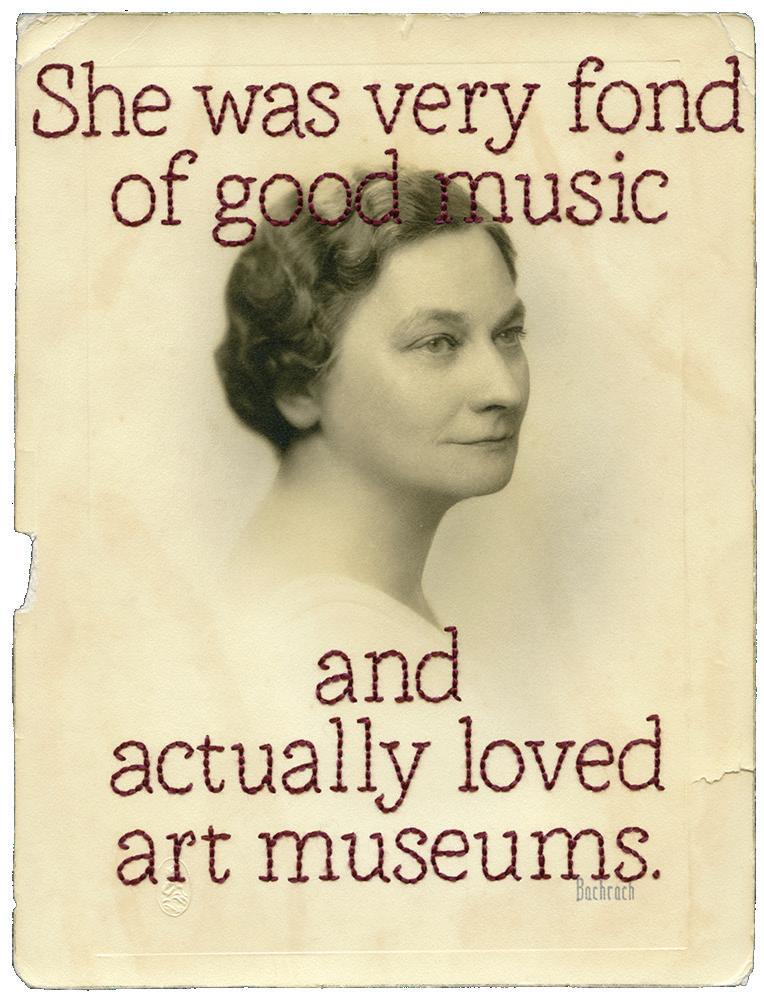
Global Asias: Contemporary Asian and Asian America Art From the Collection of Jordan D. Schnitzer and His Family Foundation
October 13, 2022 – January 15, 2023 // Montana Gallery
Sponsors: Montana Tires, Toyo Tires, Diane Boyer Jerhoff
Global Asias: Contemporary Asian and Asian American Art highlights the work of fifteen artists of Asian heritage who draw on a rich array of motifs, techniques, and cultural motivations to construct diverse “Asias” in a modern global context.
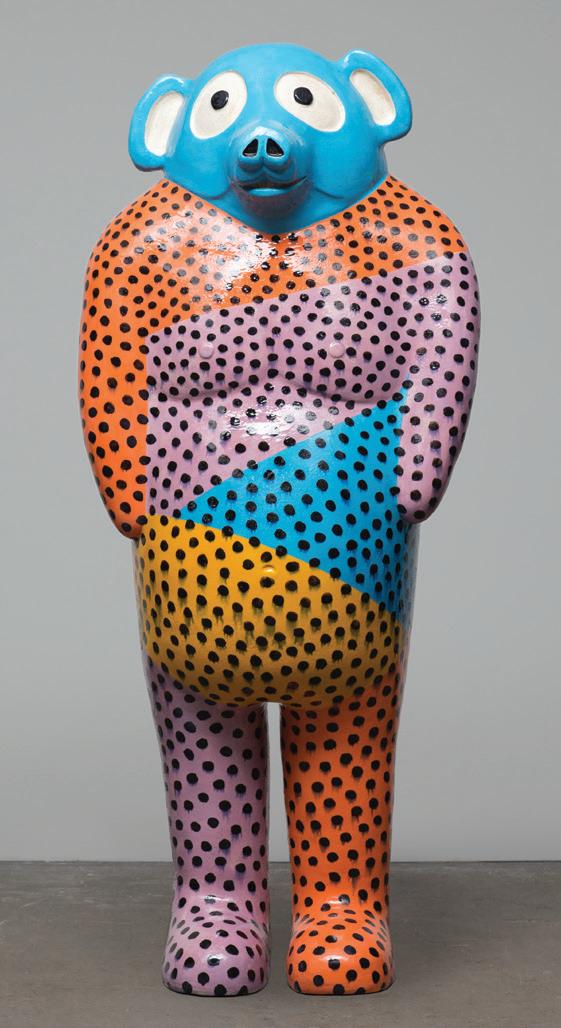
Organized by the Palmer Museum of Art in conjunction with the Jordan Schnitzer Family Foundation, the exhibition is divided into three thematic sections. “Exuberant Forms” features work that has the potential to reshape conventional views of abstract art—its composition, palette, materiality, and cultural implications—expanding and complicating the canonical narrative of abstraction. “Moving Stories” brings together powerful prints and mixed-media works that reflect on the experiences of migration, both within Asia and beyond. “Asias Reinvented” highlights two- and three-dimensional works that transform styles and techniques of traditional Asian arts in alignment with the vibes of the contemporary and the cosmopolitan.
Combined, the works in Global Asias suggest the plurality and fluidity of “Asia” as cultural construct and creative practice. The exhibition is guest curated by Chang Tan, Assistant Professor of Art History and Asian Studies at Penn State. This exhibition is organized by the Jordan Schnitzer Family Foundation and the Palmer Museum of Art at Penn State. Support for this exhibition and related education and outreach programs has been made possible by a grant from the Jordan Schnitzer Family Foundation.
Closing Celebrations with Heart Mountain Foundation’s Executive Director Aura Sunada Newlin
January 14, 2023 // 11 AM – 1 PM // Join us as we welcome Heart Mountain Foundation to conclude our celebrations of the exhibition.
Photographer Ken Blackbird
December 15, 2022 – March 25, 2023 // M.J. Murdock Gallery
Ken Blackbird (Assiniboine, Gros Ventre) grew up on the Fort Belknap Indian Reservation. After leaving the reservation at age nineteen, he worked a succession of jobs as a welder in Texas and as a forest ranger (and emergency firefighter) in Yellowstone National Park. In 1992 Blackbird graduated from the University of Montana School of Journalism and set out on an extensive internship around the country, which most notably included the Chicago Sun Times. Blackbird says he just fell into photography as a necessary part of journalism. However, his personal work comes from a different motivation:
“I’m looking for light. I’m looking for the layers of composition. I’m always looking at eyes, hands, backgrounds. I’m looking for someone doing something different. I’ve never thought of it as fine art. I just love taking photographs.” —Ken Blackbird
Jaune Quick-To-See Smith
March 23, – April 30, 2023 // Charles M. Bair Family Gallery & Northwest Projects Gallery
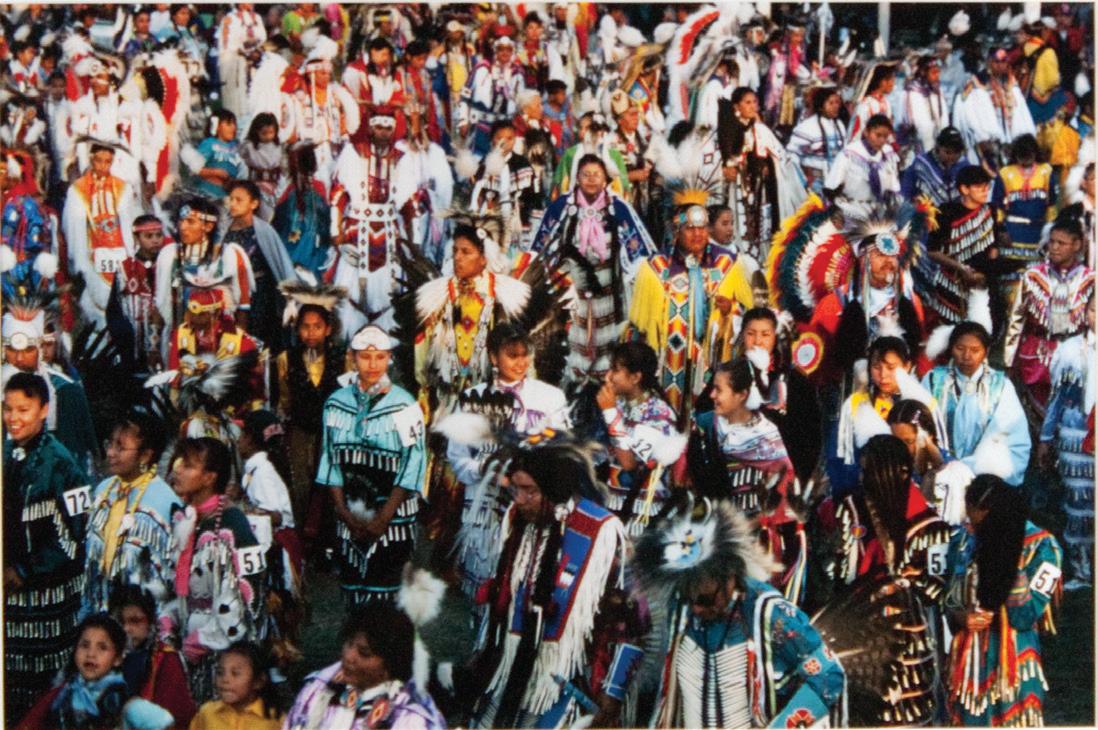
In celebration of the Whitney Museum of American Art’s retrospective, Jaune Quick-To-See Smith: Memory Map, opening April 19 – August 2023, the YAM will exhibit twelve works by Smith from the permanent collection. Smith’s paintings, drawings, and prints, grounded in personal and political identity themes, layer energetic brushwork and markings with collaged materials and references to Indigenous traditions.
Born January 15, 1940, at the St. Ignatius Mission of the Flathead Indian Reservation, Jaune Quick-to-See Smith, a citizen of the Confederated Salish and Kootenai Nation, received an Associate of Arts Degree at Olympic College in Bremerton, Washington, in 1960, a BA in Art Education from Framingham State College, Massachusetts, in 1976, and an MA in Visual Arts from the University of New Mexico in 1980. Smith has received numerous awards such as the Academy of Arts and Letters Purchase Award, New York, l987; the Joan Mitchell Foundation Painters Grant, 1996; the Women’s Caucus for the Arts Lifetime Achievement, 1997; the College Art Association Women’s Award, 2002; Governor’s Outstanding New Mexico Woman’s Award, 2005; New Mexico Governor’s Award for Excellence in the Arts, 2005. Art Table Artist Honoree, New York, 2011; Visionary Woman Award, Moore College, Pennsylvania, 2011; Elected to the National Academy of Art, New York, 2011; Living Artist of Distinction Award, Georgia O’Keeffe Museum, 2012; NAEA Ziegfeld Lecture Award, 2014; The Woodson Foundation Lifetime Achievement Award, 2015 along with four honorary doctorates: Minneapolis College of Art and Design, 1992; Pennsylvania Academy of Fine Arts, 1998; Massachusetts College of Art, 2003; University of New Mexico, Albuquerque 2009.
Smith’s work in the collections of the Museum of Modern Art, Quito, Ecuador; the Museum of Mankind, Vienna, Austria; The Walker Art Center, Minneapolis, Minnesota; The Smithsonian American Art Museum, Washington D.C.; the Museum of Modern Art, the Brooklyn Museum, the Metropolitan Museum of Art, and The Whitney Museum of American Art, New York.
The Whitney retrospective will travel to the Modern Art Museum of Fort Worth, the Seattle Art Museum, and the Minneapolis Institute of Art, and includes two works from the Yellowstone Art Museum’s permanent collection: Tongass Trade Canoe (1996) and Ronan Robe #2 (1977).
